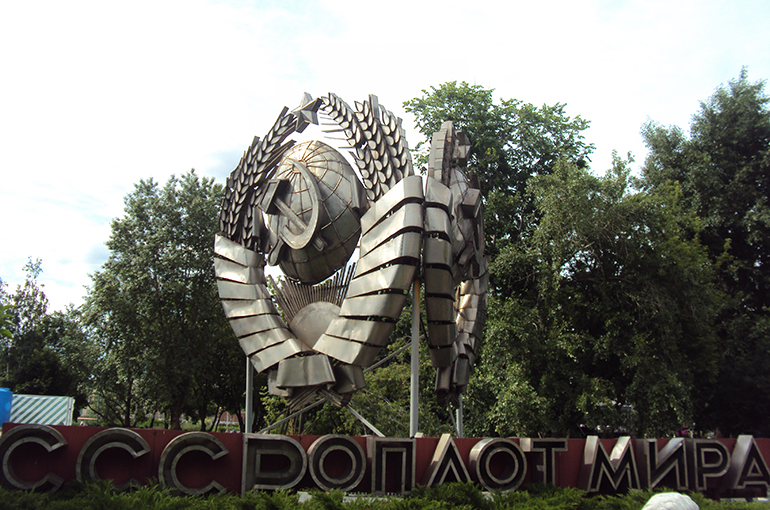As an English tutor in Russia, I had the privilege of being placed with a host family that lives in Podmosckovye, or the region that is directly outside of Russia’s capital, Moscow. Accordingly, I have had the opportunity to visit Moscow several times, and I have gained a deep appreciation and love for this great city.
From fascinating historical structures and locations to modern skyscrapers and shopping centers, from the bustle of busy streets and metro stations, to the quiet of its several parks and forests, Moscow has something to offer everyone.
Here are some of the places in Moscow and its surroundings that I have enjoyed thus far.
Red Square and the Kremlin

Before my homestay program in Russia began, the first thing that came to mind when I thought of Moscow was the Kremlin. So of course, it was at the top of my list of places to visit, and it is certainly worth the trip. Kremlin is the Russian word for “fortress,” and within its walls are several Russian Orthodox cathedrals, historical artifacts and exhibits, an armoury, a large collection of diamond-covered items, and the residence of the president of the Russian Federation.
There is even an underground exhibit that allows visitors to look down into the layers of the Kremlin’s past – standing on the glass covering of the exhibit I was able to see a foundation dating back to the 14th century.
Outside the Kremlin walls are the impressive Alexander Gardens filled with historical monuments, the Tomb of the Unknown Soldier with an hourly changing of guard, and of course Red Square and St. Basil’s Cathedral.

Across the Red Square from the Kremlin is the large shopping center GUM, where Maksim and I enjoyed some blini, or Russian pancakes.
Moscow River Waterfront
The Moscow River flows right through the center of Moscow, and in the southwestern portion of the city it is surrounded by various parks and cultural centers. Not too far from the Kremlin is the Cathedral of Christ the Savior, a beautiful Russian Orthodox cathedral that was restored after the fall of the Soviet Union.

A pedestrian bridge leads across the river to the south side, where a large monument to Peter the Great resides. From there, a large chain of parks follows the river for almost five miles.
The first park, Muzeon, is filled with sculptures, and even has a section of Soviet relics. It also contains a part of the Tretyakovskaya Gallery which houses art from the 20th and 21st centuries, including Malevich’s famous “Black Square” painting.

The next park down the river is Gorki Park – this park has fountains, ponds, sports centers, cafes, a skate park, a modern art museum, and more. When Maksim and I visited, we rented some roller blades and skated around, and then we rented a paddle boat at one of the larger ponds. Afterwards we spent some time on the small beach of the pond, watched a music and light show at the central fountain, and enjoyed some cinnamon gelato.
Russian Forests
While the forest in not exactly a typical tourist attraction, as a hiking enthusiast, I have been very impressed by the extent of forest preserves within Russian cities. In Moscow, I had the opportunity to explore Vorobyovy Gory (or Sparrow Hills). This area is full of walking trails, ponds, creeks, and small nature exhibits.

Situated on the steep bank of the Moscow River, this area is perfect for anyone who likes to hike through forests (like me). This type of forest park seems relatively common in Russia. Near my host family’s home is another such park, albeit much flatter.

My host family likes to take walks through the forest, and sometimes they set aside time to pick berries and mushrooms. I have also seen many others there camping, fishing, grilling shashlik, and tanning in the sun.
Local Festivals
A few festivals have been held in and around Ramenskoye since I arrived in June, and I have had the opportunity to visit two of them. The first was the Ramenskoye City Day celebration.
At the entrance to the central park there were concerts featuring traditional Russian music, as well as displays of local art made out of clay. Further into the park was a historical village exhibition. It featured volunteer actors playing the roles of blacksmith, village doctor, medieval soldier, and many others. There were also boat tours on a replica of a 10th-century wooden longship.

The second festival that I was able to see was called MAKS, or the International Aviation and Space Expo. While I did not go into the expo itself, I was able to see the air shows with my host family in a field near the expo. The shows featured pilots and military planes from several countries. I was quite impressed by the skills of the various aerobatic teams.
During my adventures in and around Moscow I have learned much about a new culture, a fascinating and inspiring culture that is gradually becoming a part of who I am. I certainly cherish the wonderful opportunity I have to live in Russia for this short while.
About the Author: Samuel Tew
I am a student at Florida State University studying International Affairs. I am a vocal musician and hiking enthusiast. I lived in Russia previously as a volunteer missionary for the Church of Jesus Christ of Latter-day Saints, and I am looking forward to learning more now as I live with a Russian family.

Leave a Reply